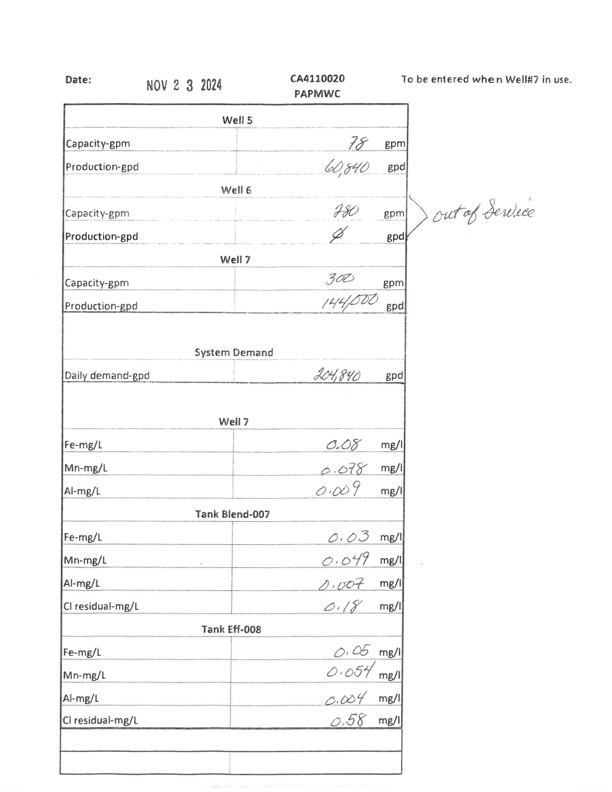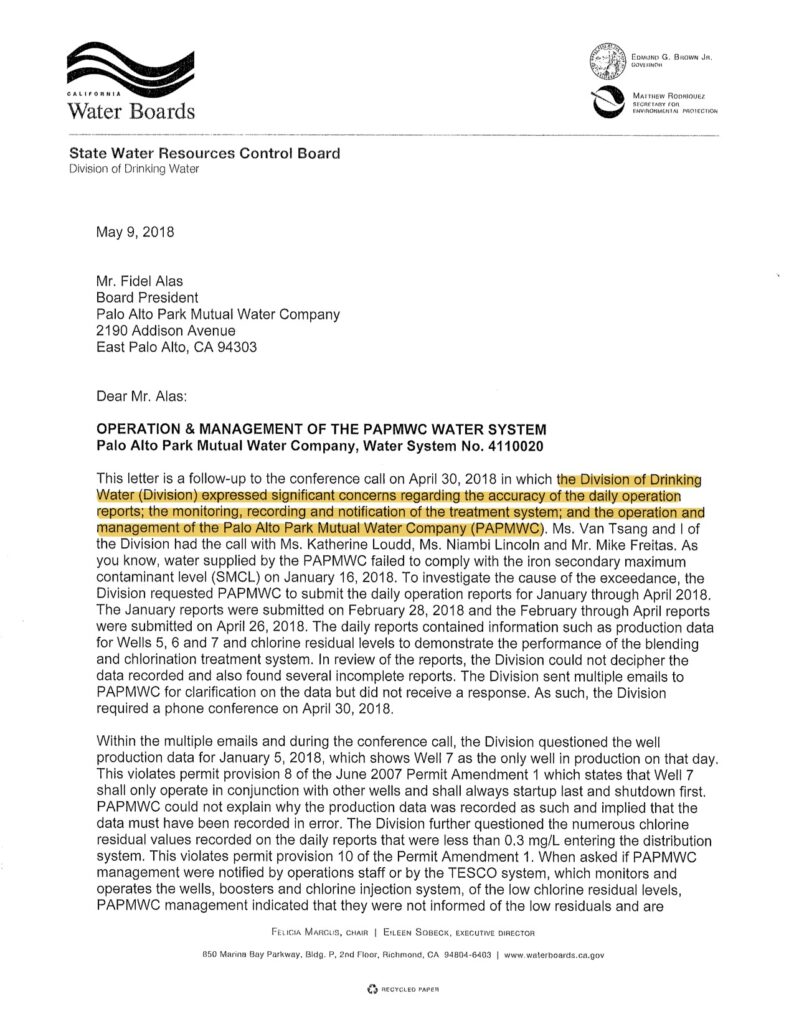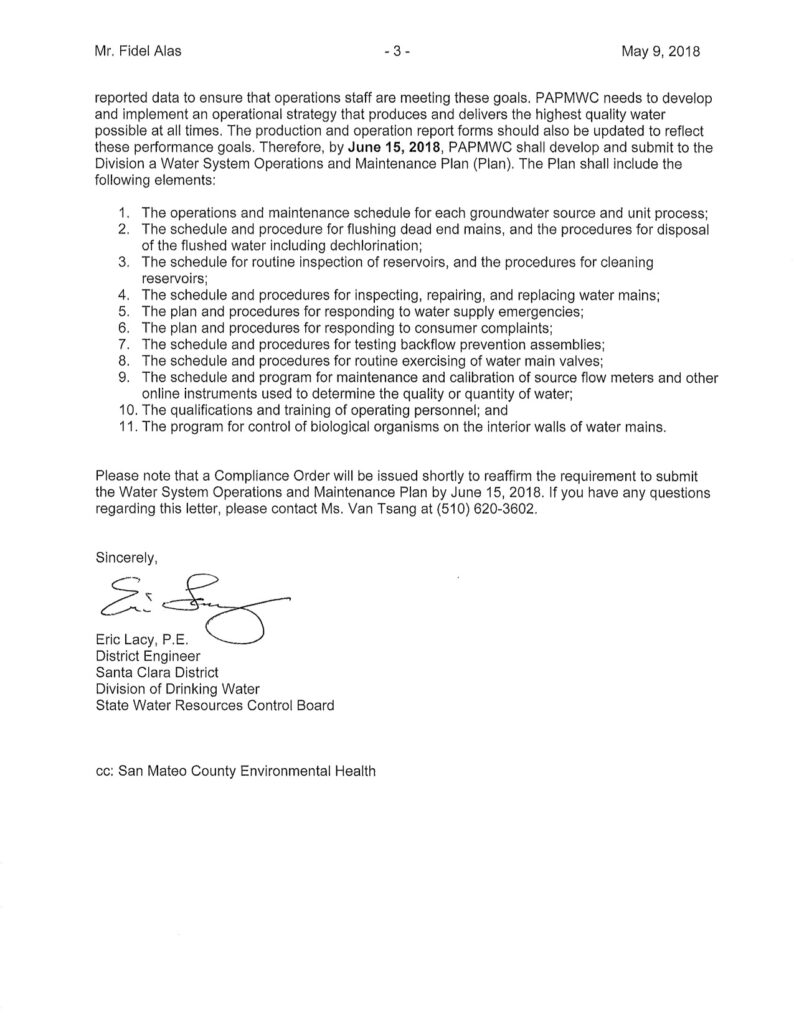
Well 7 is normally not used because it has high levels of manganese, iron and aluminum. While these are not considered health hazards, they do affect how the water looks, tastes, smells and how it impacts appliances.

Well 6 has failed 3 times in the last 2 years. The casing is cracked. The State Water Resources Control Board believes it can fail catastrophically at any time. Without Well 6, the company cannot meet peak demand. It will be taken out of service to make temporary repairs, but cannot be operated at full capacity.

Well 5 is damaged and can only produce about a quarter of the flow that well 6 produces.

Well 3 completely failed many years ago. The company submitted plans to the state to drill a replacement well in 2021, but the plans were rejected because they were incomplete. It’s been over 2 years, and the company still has not successfully submitted complete plans.
Our conversation with the state water board:
According to Van Tsang, a supervisor at the State Water Resources Control Board:
Attached is the daily log that PAPMWC is required to submit when Well 7 is in use. According to the log, Wells 5, 6 and 7 currently produce 78 gpm, 280 gpm and 300 gpm, respectively. According to the Source Capacity Planning Study prepared by PAPMWC, dated December 7, 2023, the maximum day demand based on daily water usage data from January 2017 to July 2023 is 593,000 gallons.
Combined production from Wells 5 and 7, or Wells 5 and 6, cannot meet peak demand during the summer months. We are uncertain about the fire flow requirements for the community; water systems should work with the local fire marshals to determine the fire flow requirements.
Yes, production from Wells 6 and 7, together, can meet peak demands.
No, Well 7, alone, cannot meet peak demands.
There is no immediate threat during the fall and winter seasons when water demand is low, unless Well 7 fails.
No, the maximum day demand does not take into account unusual surge in water demand, like a fire or main break.
Including this incident, the well casing for Well 6 has failed three times in the past 2 years. All the repairs made are temporary and the well can catastrophically fail at any time.

From PAPMWC’s website:
Public Notification Update: Well Activation and Water Quality Advisory
To meet current water demands, Well 7 was activated on November 6, 2024, while Well 6 is temporarily out of service for repairs. Well 7 will only be used if Wells 5 and 6 cannot fully meet system demand.
Please note, the water quality from Well 7 is not as high as from our other wells. In the past, Well 7 has exceeded Secondary Maximum Contaminant Levels (SMCL) for iron, manganese, and aluminum. These exceedances do not pose a health hazard but may have aesthetic effects such as:
Aluminum: Colored water
Iron: Rusty color, sediment, metallic taste, reddish/orange staining
Manganese: Black to brown color, black staining, bitter metallic taste
We encourage customers to conserve water to reduce strain on the supply. Simple actions like fixing leaks, taking shorter showers, and reducing lawn watering can help.
We appreciate your patience as we work with the State Division of Drinking Water and contractors to drill a new replacement well (Well 3R).
Thank you for your understanding and cooperation.




